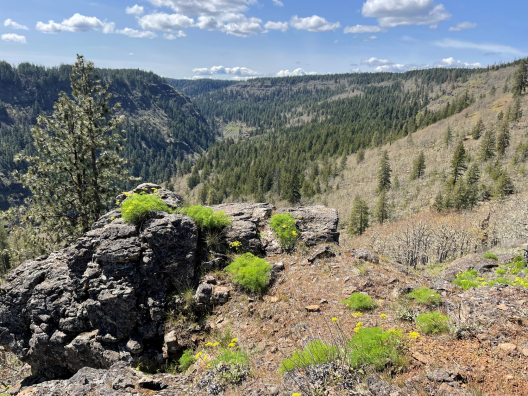Partner Focus – Columbia Land Trust

Rare Care is fortunate to partner with several land trusts in the state to conserve rare plants. One such organization is the Columbia Land Trust, who works across five ecosystems from the mouth of the Columbia River to approximately 200 miles inland and 50 miles north and south of the river in Washington and Oregon. We reached out to Nate Ulrich, Conservation Manager, to find out more about their work. Nate’s answers were edited for space.
What is the role of land trusts in conserving land in Washington?
“Land trusts tend to work within defined service areas and very cooperatively with other land trusts through state associations—in Washington, the WA Association of Land Trusts and in Oregon, the Coalition of Oregon Land Trusts. While land trusts at times compete for public funding, in general our work is guided by the analogy that, ‘a rising tide lifts all boats.’ Land trusts have a strong emphasis on ensuring that conservation work benefits people and communities. Those benefits mean different things in different places, but examples include educational opportunities, public access, co-management with tribes or provision of ecosystem services such as fire resilience or stormwater retention. Connecting people to conservation is foundational to ensuring the long-term sustainability of our work.”
How do you select a parcel for possible acquisition?
“Our work is guided by our spatially explicit conservation plan we call the Conservation Agenda. It was created using a conservation prioritization model developed by The Nature Conservancy for the Oregon Conservation Strategy. Since our work is voluntary and private, our conservation priorities are always opportunistic. Our six-person Conservation Team’s job is to identify the most ecologically intact, connected or highest restoration potential parcels within those priority areas and work with landowners to enable conservation acquisition opportunities. Rare plants definitely play a role in site-specific prioritization work! We use plants as an indicator of overall habitat quality, or ecological integrity. In rare cases we have conserved sites due to presence of specific plant species.”
How have you worked with Rare Care in the past?
“Rare Care provides such an important foundation for our work! Rare Care staff, volunteers and knowledge are essential to our ability to implement our conservation priorities. We rely on these resources to identify the most important places to conserve and to be able to communicate with funders why the places we’ve prioritized are the right places to invest. We have skilled botanists on our team, but the high level of expertise and additional capacity provided by Rare Care is essential to our ability to identify and conserve the most important places in our service area.”
Are there any specific lands you think are especially worthy of a botanical field trip?
“A couple of botanical jewels in the East Cascades ecoregion are the Four Sisters and Mill Creek Ridge Natural Areas south and west of Dalles, OR. Both are easily accessible via public roads. Spring is the time to visit.”
You can learn more about CLT’s work at https://www.columbialandtrust.org/.